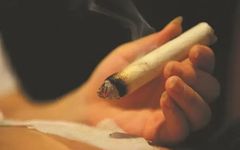
Moxibustion has a wide range of effects. Modern research suggests that the methanol extract of the combustion products of mugwort (Ai Ye) has a free radical scavenging effect, which is stronger than that of the methanol extract of unburned mugwort.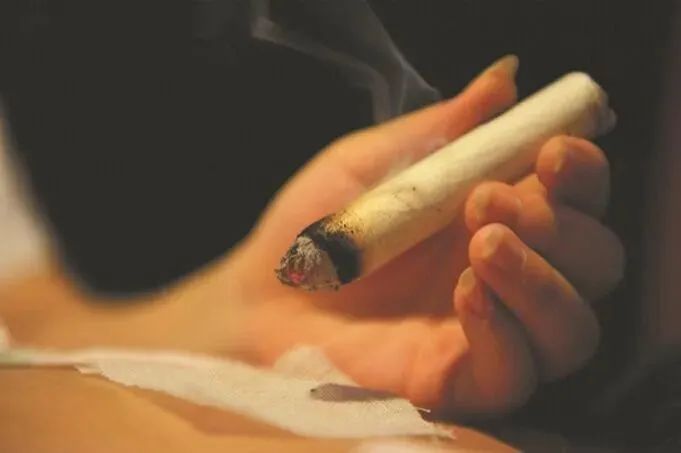 When we apply moxibustion to specific areas of the body, lipid peroxidation significantly decreases, an effect attributed to the combustion products of mugwort.The burning of mugwort not only does not destroy its effective medicinal components but actually enhances them.The antioxidant substances in the combustion products of mugwort adhere to the skin at acupuncture points and penetrate into the body through the heat of moxibustion.
When we apply moxibustion to specific areas of the body, lipid peroxidation significantly decreases, an effect attributed to the combustion products of mugwort.The burning of mugwort not only does not destroy its effective medicinal components but actually enhances them.The antioxidant substances in the combustion products of mugwort adhere to the skin at acupuncture points and penetrate into the body through the heat of moxibustion. Research confirms that the heat generated during moxibustion is a very effective physical factor for treatment, specifically infrared radiation.According to the principles of physics, any object can emit and absorb infrared radiation, and the human body is no exception.Near-infrared radiation penetrates deeper than far-infrared radiation, reaching up to 10mm and being absorbed by the body.
Research confirms that the heat generated during moxibustion is a very effective physical factor for treatment, specifically infrared radiation.According to the principles of physics, any object can emit and absorb infrared radiation, and the human body is no exception.Near-infrared radiation penetrates deeper than far-infrared radiation, reaching up to 10mm and being absorbed by the body.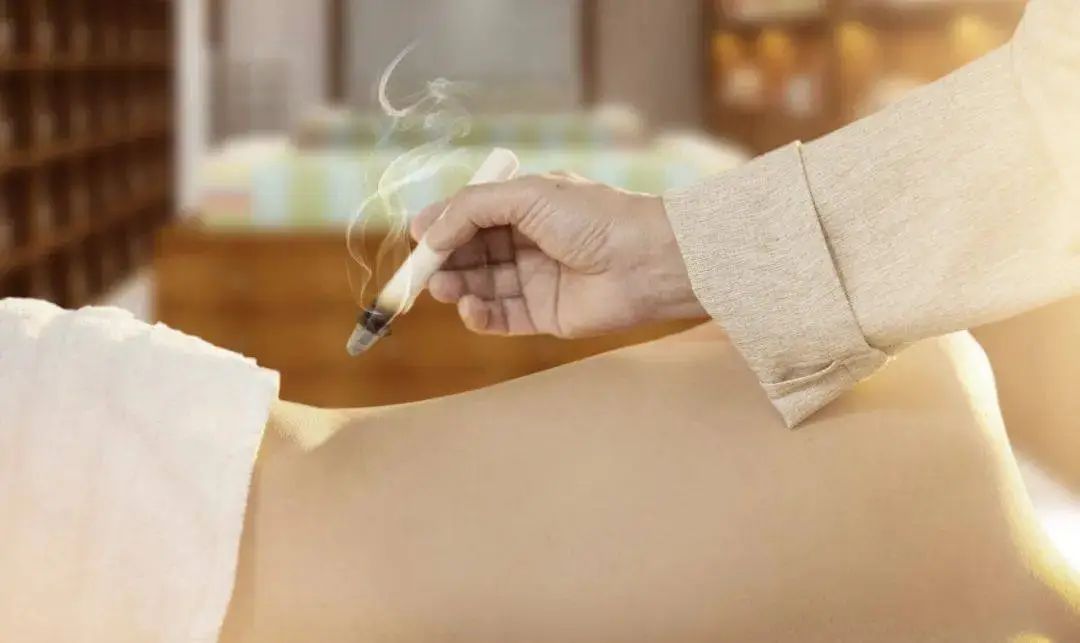 Studies suggest that the radiation energy spectrum produced during moxibustion is primarily infrared, with near-infrared being the main component.Near-infrared can stimulate hydrogen bonds in biological molecules at acupuncture points, producing a stimulated coherent resonance absorption effect, transmitting the energy needed by human cells through the neurohumoral system.The infrared radiation during moxibustion provides essential energy for cellular metabolic activities and immune functions, and can also activate energy-deficient pathological cells.When applied to acupuncture points, the near-infrared radiation has a high penetration ability, effectively delivering energy to the affected areas through the meridian system.The benefits of moxibustion extend to internal medicine, surgery, gynecology, pediatrics, and otolaryngology, particularly effective for conditions such as mastitis, prostatitis, periarthritis of the shoulder, pelvic inflammatory disease, cervical spondylosis, and diabetes.Moreover, moxibustion has unique health-preserving effects. In modern society, acupuncture has continued to develop, while moxibustion has been somewhat neglected.
Studies suggest that the radiation energy spectrum produced during moxibustion is primarily infrared, with near-infrared being the main component.Near-infrared can stimulate hydrogen bonds in biological molecules at acupuncture points, producing a stimulated coherent resonance absorption effect, transmitting the energy needed by human cells through the neurohumoral system.The infrared radiation during moxibustion provides essential energy for cellular metabolic activities and immune functions, and can also activate energy-deficient pathological cells.When applied to acupuncture points, the near-infrared radiation has a high penetration ability, effectively delivering energy to the affected areas through the meridian system.The benefits of moxibustion extend to internal medicine, surgery, gynecology, pediatrics, and otolaryngology, particularly effective for conditions such as mastitis, prostatitis, periarthritis of the shoulder, pelvic inflammatory disease, cervical spondylosis, and diabetes.Moreover, moxibustion has unique health-preserving effects. In modern society, acupuncture has continued to develop, while moxibustion has been somewhat neglected. During the moxibustion treatment process, the burning of the moxa on acupuncture points will leave scars on the body.Master Zhou Meisheng pointed out that the dual suffering from pain and moxibustion scars has hindered the development of moxibustion, and he calls for in-depth research on moxibustion to promote its modernization.In recent years, as people have recognized the unique efficacy of moxibustion, it has regained attention in the medical community, and the pace of modern research is accelerating.Modern warming moxibustion techniques do not directly contact the skin, using suspended moxa sticks or moxibustion devices, which are effective for treating diseases and preserving health.These methods are convenient, easy to operate, and do not burn the skin or leave scars.Moxibustion replenishes Yang energy in the body, especially suitable for those with Yang deficiency. Moxibustion has both tonifying and draining effects; for individuals with Yin deficiency and excess heat, it is advisable to start with draining methods, while nourishing Yin and balancing Yin and Yang.The moxibustion method utilizes the burning of moxa (Ai Rong) on the surface of the body at acupuncture points, leveraging the gentle heat of the moxibustion fire and the medicinal properties, along with the functions of the acupuncture points, to warm and promote Qi and blood circulation, support the righteous Qi, and expel pathogenic factors, achieving therapeutic and health-preserving purposes.
During the moxibustion treatment process, the burning of the moxa on acupuncture points will leave scars on the body.Master Zhou Meisheng pointed out that the dual suffering from pain and moxibustion scars has hindered the development of moxibustion, and he calls for in-depth research on moxibustion to promote its modernization.In recent years, as people have recognized the unique efficacy of moxibustion, it has regained attention in the medical community, and the pace of modern research is accelerating.Modern warming moxibustion techniques do not directly contact the skin, using suspended moxa sticks or moxibustion devices, which are effective for treating diseases and preserving health.These methods are convenient, easy to operate, and do not burn the skin or leave scars.Moxibustion replenishes Yang energy in the body, especially suitable for those with Yang deficiency. Moxibustion has both tonifying and draining effects; for individuals with Yin deficiency and excess heat, it is advisable to start with draining methods, while nourishing Yin and balancing Yin and Yang.The moxibustion method utilizes the burning of moxa (Ai Rong) on the surface of the body at acupuncture points, leveraging the gentle heat of the moxibustion fire and the medicinal properties, along with the functions of the acupuncture points, to warm and promote Qi and blood circulation, support the righteous Qi, and expel pathogenic factors, achieving therapeutic and health-preserving purposes.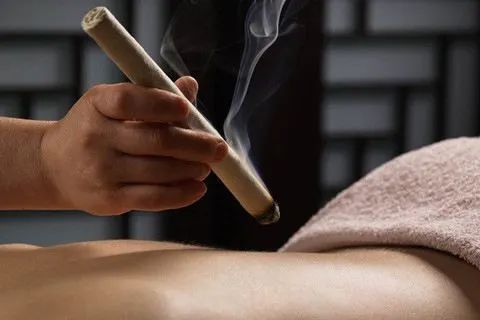 In the book Ben Cao Cong Xin by Wu Yiluo from the Qing Dynasty, it is recorded that mugwort leaves are “bitter and pungent, warm when raw, hot when cooked, pure Yang in nature, capable of reviving the Yang that has sunk, unblocking the twelve meridians, moving through the three Yin, regulating Qi and blood, expelling cold and damp… Using it for moxibustion can penetrate the meridians and eliminate hundreds of diseases.”This means that moxa cones made from mugwort can inject heat into the body, warm Qi and blood, reach the meridians, and by moxibusting certain acupuncture points with tonifying effects, can achieve the purpose of supporting the righteous Qi and expelling pathogenic factors, thus strengthening the body and preserving health. The health-preserving moxibustion method has been a technique for disease prevention since ancient times.
In the book Ben Cao Cong Xin by Wu Yiluo from the Qing Dynasty, it is recorded that mugwort leaves are “bitter and pungent, warm when raw, hot when cooked, pure Yang in nature, capable of reviving the Yang that has sunk, unblocking the twelve meridians, moving through the three Yin, regulating Qi and blood, expelling cold and damp… Using it for moxibustion can penetrate the meridians and eliminate hundreds of diseases.”This means that moxa cones made from mugwort can inject heat into the body, warm Qi and blood, reach the meridians, and by moxibusting certain acupuncture points with tonifying effects, can achieve the purpose of supporting the righteous Qi and expelling pathogenic factors, thus strengthening the body and preserving health. The health-preserving moxibustion method has been a technique for disease prevention since ancient times.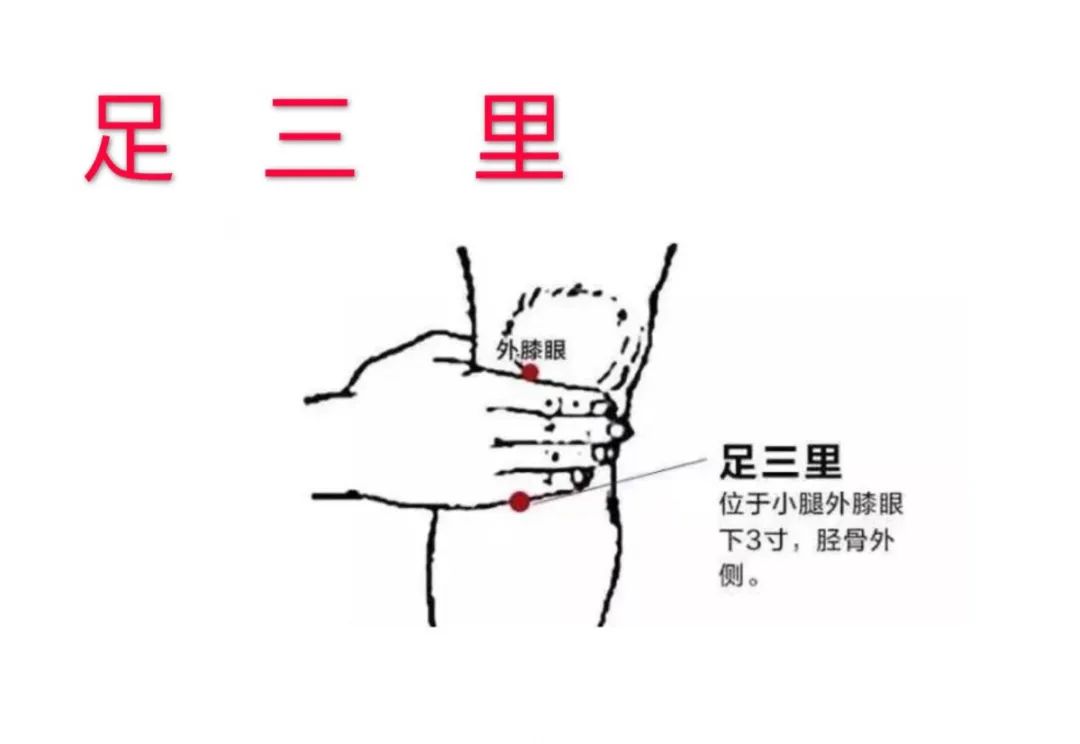 To maintain health and safety, regularly moxibustion at the Zu San Li (Stomach 36) point is recommended, ensuring that the moxibustion scars do not dry out and heal with scabs, which is a summary of experiences from long-term medical practice in ancient times.For example, moxibusting the Feng Men (Wind Gate) point can prevent colds, while regular moxibustion at the Qu Chi (Large Intestine 11), Zhong Wan (Ren 12), Zu San Li (Stomach 36), Da Zhui (Governing Vessel 14), Pi Shu (Spleen Back Shu), Shen Shu (Kidney Back Shu), Yang Ling Quan (Gallbladder 34), and San Yin Jiao (Spleen 6) points can have health-preserving effects.Modern medical experimental research has proven that moxibustion can adjust the functions of the internal organs, promote metabolism, alter blood composition, increase the number of white blood cells, hemoglobin, and red blood cells, and enhance the phagocytic function of white blood cells, thereby improving immunity and increasing the body’s resistance, thus serving a preventive health purpose.Mugwort (Ai Ye) can promote the regulation of Qi and blood, warm the interior and expel cold, eliminate dampness and relieve stagnation, generate muscle and stabilize pregnancy, benefit Yin Qi, warm the uterus, kill roundworms, moxibustion for hundreds of diseases, can unblock the Qi and blood of the twelve meridians, and can revive the original Yang.It is used internally to treat cold womb infertility, abdominal pain during menstruation, and excessive bleeding. Externally, it can moxibust for hundreds of diseases, strengthen the original Yang, warm and unblock the meridians, dispel wind and cold, relax muscles and joints, and revive Yang to rescue from collapse.The efficacy of mugwort in moxibustion is beyond our imagination. The warmth and stimulation of mugwort can reach deep layers, providing a lasting sense of comfort.If ordinary fire heat is used, one only feels superficial burning pain without the warming and cold-dispelling effects.Moxibustion, like acupuncture, can invigorate weakened functions and suppress overactive functions.For those with deficiency and cold, it can tonify; for those with stagnation, it can disperse; for those with illness, it can treat; and for those without illness, moxibustion can promote health and longevity.The above is a summary of the effects and benefits of moxibustion by Xiao Ai, hoping it can be helpful to everyone.Next, I will introduce the effects and benefits of moxibustion at different acupuncture points.Moxibustion at Zu San Li:
To maintain health and safety, regularly moxibustion at the Zu San Li (Stomach 36) point is recommended, ensuring that the moxibustion scars do not dry out and heal with scabs, which is a summary of experiences from long-term medical practice in ancient times.For example, moxibusting the Feng Men (Wind Gate) point can prevent colds, while regular moxibustion at the Qu Chi (Large Intestine 11), Zhong Wan (Ren 12), Zu San Li (Stomach 36), Da Zhui (Governing Vessel 14), Pi Shu (Spleen Back Shu), Shen Shu (Kidney Back Shu), Yang Ling Quan (Gallbladder 34), and San Yin Jiao (Spleen 6) points can have health-preserving effects.Modern medical experimental research has proven that moxibustion can adjust the functions of the internal organs, promote metabolism, alter blood composition, increase the number of white blood cells, hemoglobin, and red blood cells, and enhance the phagocytic function of white blood cells, thereby improving immunity and increasing the body’s resistance, thus serving a preventive health purpose.Mugwort (Ai Ye) can promote the regulation of Qi and blood, warm the interior and expel cold, eliminate dampness and relieve stagnation, generate muscle and stabilize pregnancy, benefit Yin Qi, warm the uterus, kill roundworms, moxibustion for hundreds of diseases, can unblock the Qi and blood of the twelve meridians, and can revive the original Yang.It is used internally to treat cold womb infertility, abdominal pain during menstruation, and excessive bleeding. Externally, it can moxibust for hundreds of diseases, strengthen the original Yang, warm and unblock the meridians, dispel wind and cold, relax muscles and joints, and revive Yang to rescue from collapse.The efficacy of mugwort in moxibustion is beyond our imagination. The warmth and stimulation of mugwort can reach deep layers, providing a lasting sense of comfort.If ordinary fire heat is used, one only feels superficial burning pain without the warming and cold-dispelling effects.Moxibustion, like acupuncture, can invigorate weakened functions and suppress overactive functions.For those with deficiency and cold, it can tonify; for those with stagnation, it can disperse; for those with illness, it can treat; and for those without illness, moxibustion can promote health and longevity.The above is a summary of the effects and benefits of moxibustion by Xiao Ai, hoping it can be helpful to everyone.Next, I will introduce the effects and benefits of moxibustion at different acupuncture points.Moxibustion at Zu San Li:
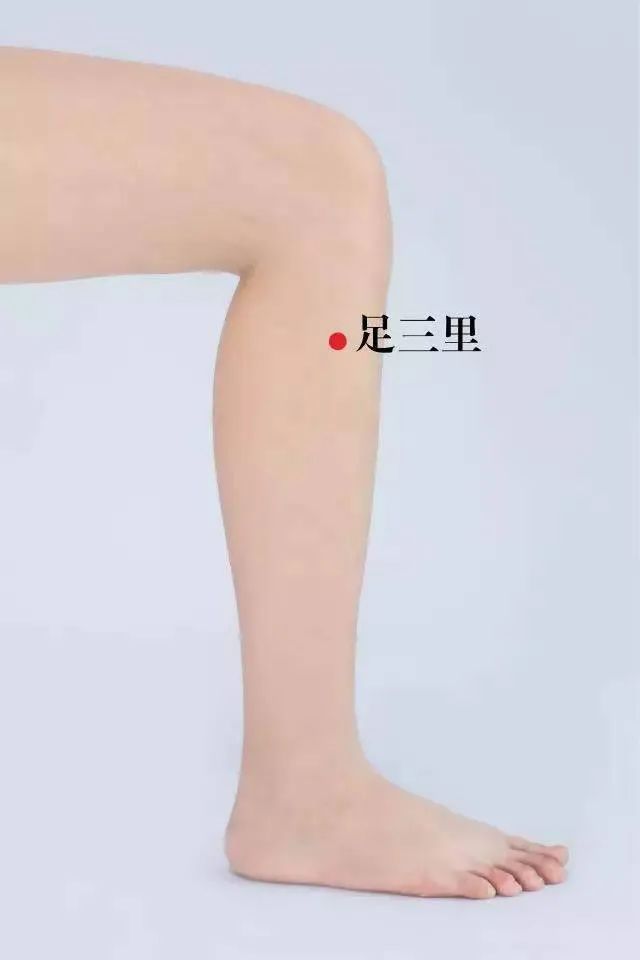
Zu San Li (Stomach 36) is the He-Sea point of the Yangming Stomach Meridian and one of the five Shu points, being the most important strengthening point for the whole body. It has the effects of strengthening the spleen and stomach, assisting in digestion, regulating Qi and blood, supporting the righteous Qi, dispelling wind pathogens, and strengthening the body for longevity. It is commonly said, “If you want to be safe, do not neglect Zu San Li“; it is the most commonly used health-preserving point throughout history. The common method is to use moxa sticks for gentle moxibustion or suppurative moxibustion.Moxibustion at Guan Yuan:
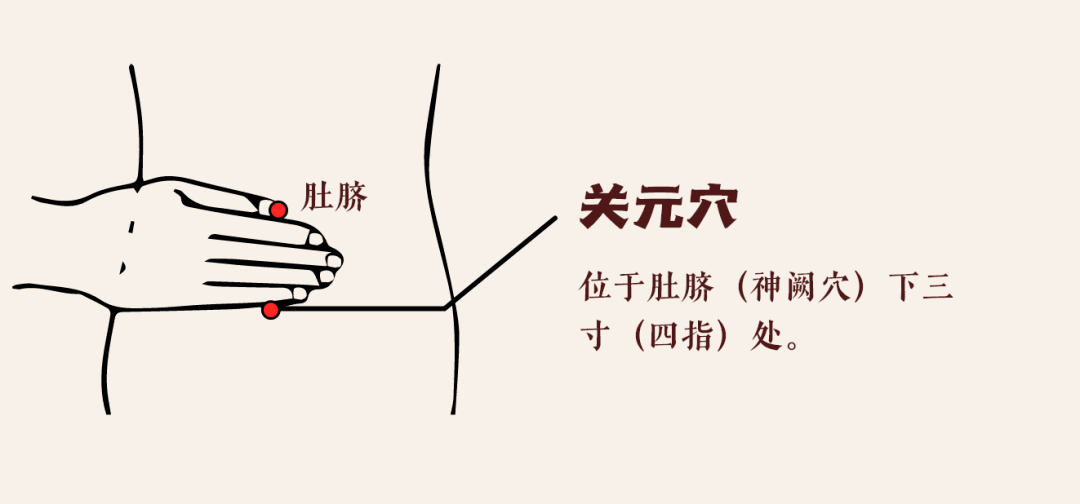
Guan Yuan (Ren 4) is an acupuncture point on the Ren Meridian, where the two Yin meridians meet. It is the Mu point of the hand Taiyang Small Intestine. It has the effects of warming the kidneys, securing essence, benefiting Qi, reviving Yang, strengthening the foundation, regulating Qi and blood, and promoting health. Moxibustion can adjust the tension of the bladder, promote pituitary and gonadal function, enhance the body’s immunity, and prevent diseases while strengthening the body. The ancients said, “Guan Yuan governs all deficiencies and is the source of vitality.” It is effective for preventing and treating enuresis, nocturnal emissions, and habitual constipation. It is a commonly used point for health preservation in middle-aged and elderly individuals.Moxibustion at Qi Hai:
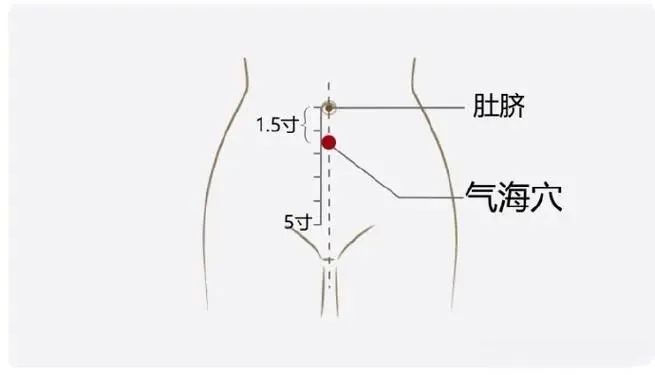
Qi Hai (Ren 6) is an important health-preserving point on the Ren Meridian. It has the effects of replenishing original Qi, benefiting the kidneys, regulating the Chong and Ren meridians, and strengthening the body. Moxibustion can adjust the functions of the stomach and kidneys, enhancing the body’s immunity. It is effective for diarrhea, enuresis, impotence, nocturnal emissions, irregular menstruation, excessive bleeding, stroke, and infertility. The ancients said, “Qi Hai is the place where original Qi is generated.”Moxibustion at Shen Shu:

Shen Shu (Kidney Back Shu) is the back Shu point of the foot Taiyang Bladder Meridian, which has the effects of tonifying the kidneys, benefiting essence, strengthening the waist and back, enhancing hearing and vision, strengthening bones, and warming Yang to dispel cold. Moxibustion can adjust kidney function, promote adrenal cortex function, regulate bladder tension, and stimulate the phagocytic ability of the reticuloendothelial system. It is effective for kidney deficiency, low back pain, nocturnal emissions, impotence, enuresis, asthma, etc.Moxibustion at Gao Yu Shu:
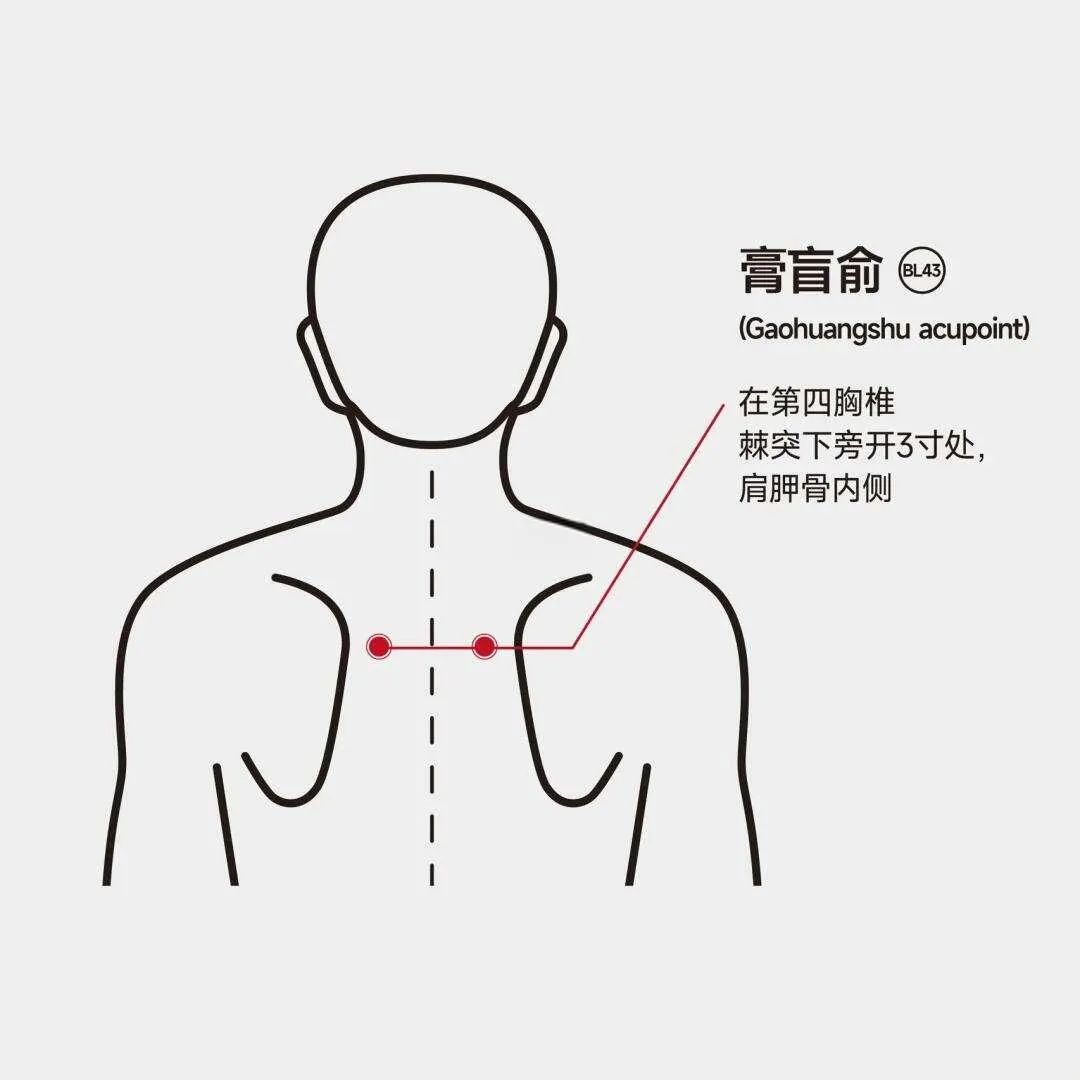
Gao Yu Shu (Lung Back Shu) is the back Shu point of the foot Taiyang Bladder Meridian, which has the effects of regulating lung Qi, nourishing Yin, moistening the lungs, and replenishing deficiencies. Moxibustion can alleviate bronchial symptoms, increase hemoglobin and red blood cell counts, and prevent and treat tuberculosis, bronchitis, asthma, deficiency syndromes, and all blood disorders.Moxibustion at Feng Men:
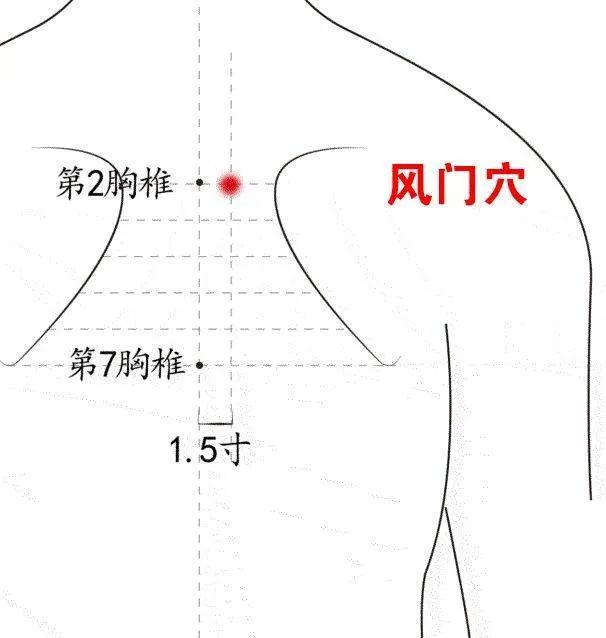
Feng Men (Wind Gate) is an acupuncture point on the foot Taiyang Bladder Meridian, where it intersects with the Governing Vessel, also known as the “heat house,” and is the gateway for wind pathogens. It has the effects of benefiting the lungs, releasing the exterior, dispersing wind pathogens, and regulating Qi. Moxibustion can adjust lung function and enhance lung ventilation. It is effective for all wind-related conditions, preventing and treating colds, rhinitis, pneumonia, stroke, and facial paralysis.Moxibustion at San Yin Jiao:
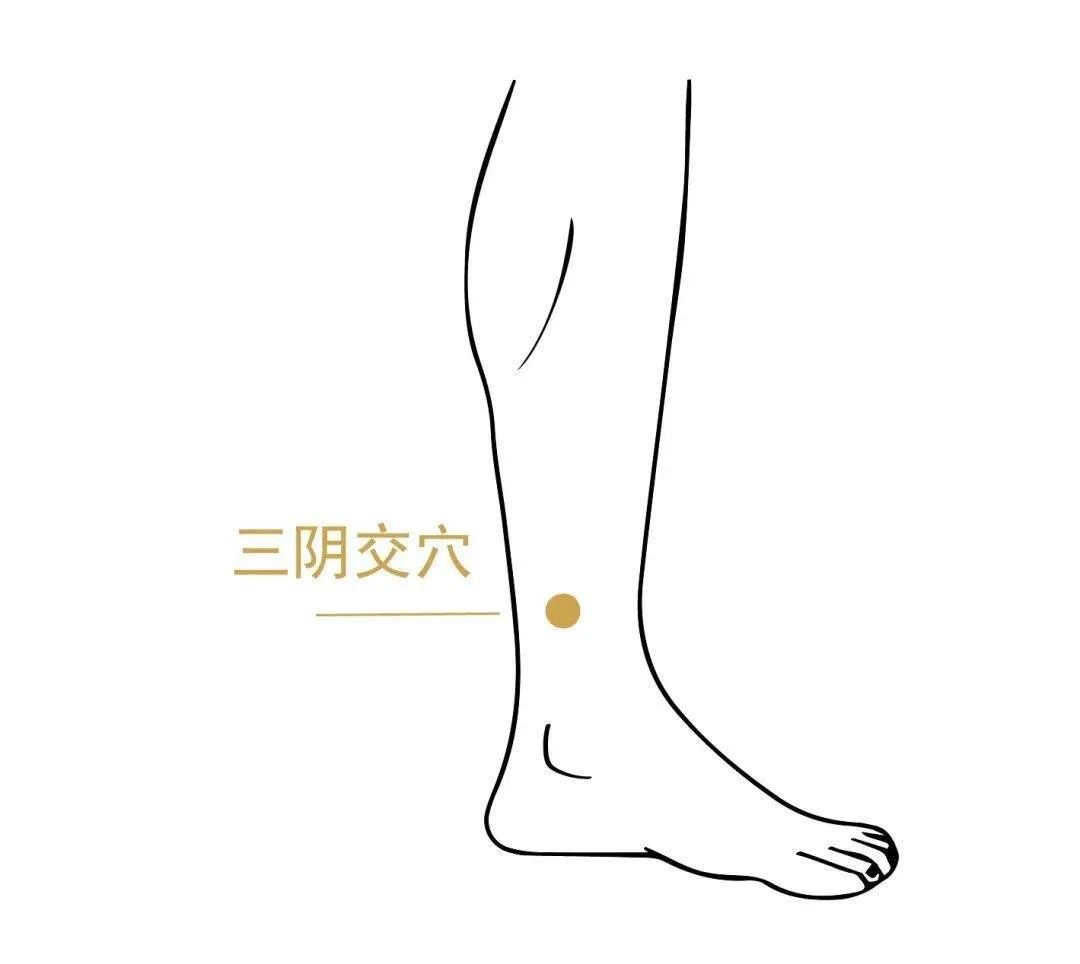
San Yin Jiao (Spleen 6) is an acupuncture point on the foot Taiyin Spleen Meridian, where the three Yin meridians intersect. It has health-preserving effects on the stomach, tonifying the liver and kidneys, regulating menstruation, and supporting reproductive health. It is effective for diseases of the liver, spleen, and kidneys, preventing and treating various types of heart disease, hypertension, diabetes, mental disorders, and gynecological diseases.Moxibustion at Feng Chi:

Feng Chi (Wind Pool) is located in the depression between the sternocleidomastoid muscle and the upper attachment of the trapezius muscle, deep to which is the occipital muscle; it has branches of the occipital artery and vein; and is innervated by branches of the lesser occipital nerve. It has the effects of relaxing muscles and relieving muscle stiffness. It is effective for headaches, dizziness, neck stiffness, red eyes, tearing, nasal congestion, nosebleeds, deafness, Qi obstruction, stroke, facial paralysis, malaria, febrile diseases, colds, and goiter.Moxibustion at Da Zhui:

Da Zhui (Governing Vessel 14) is located in the depression below the spinous process of the seventh cervical vertebra. It is associated with the lumbar fascia, supraspinous ligament, and interspinous ligament; it has branches of the first intercostal artery and vein; and is innervated by the posterior branch of the eighth cervical nerve. It is commonly used for the prevention and treatment of various respiratory diseases. Modern research has confirmed that moxibustion at Da Zhui can enhance the body’s immune function, improve lung function, and has a bidirectional regulatory effect on platelets and white blood cells.Moxibustion at Yong Quan:
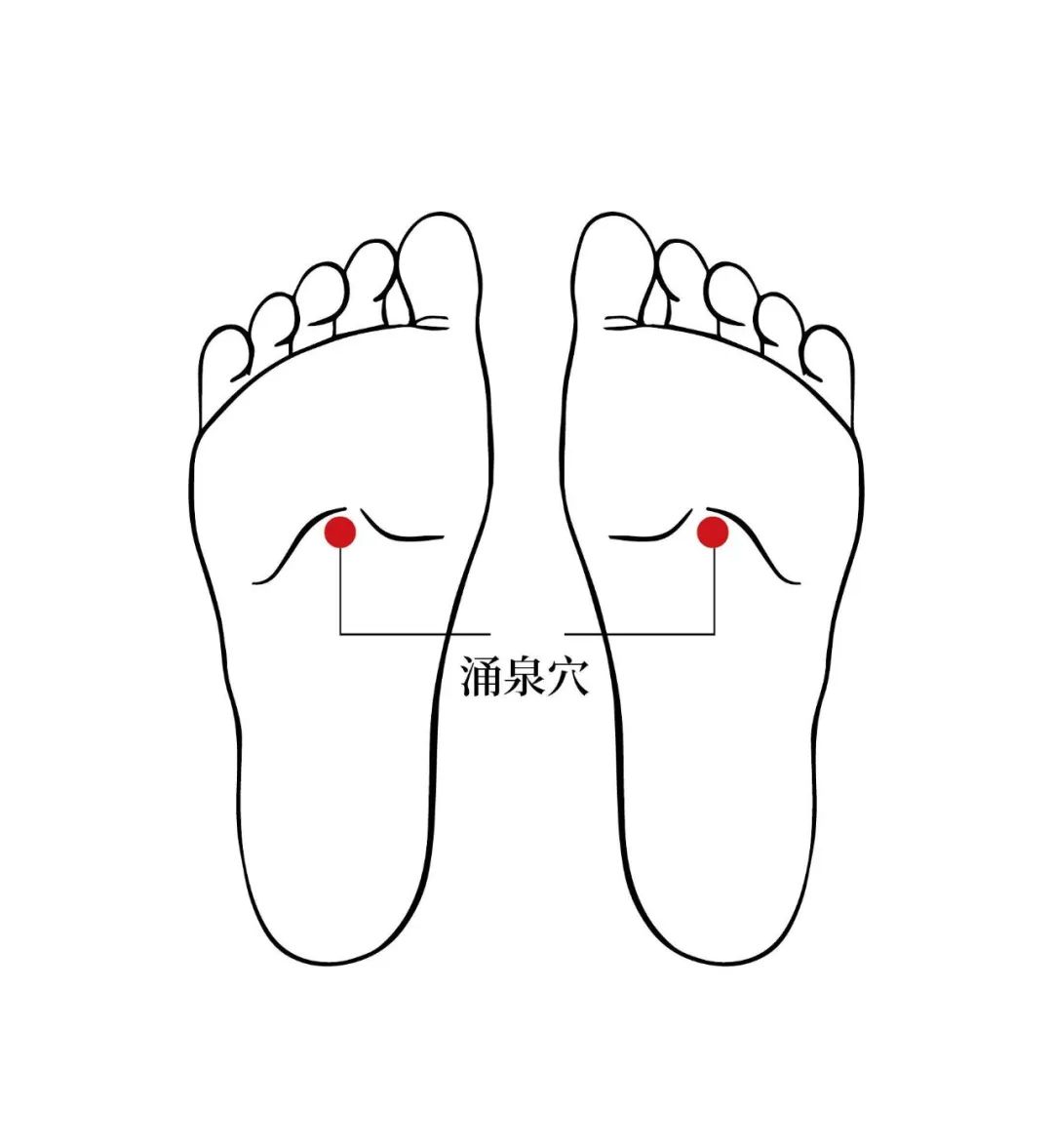
Yong Quan (Kidney 1) is located in the depression between the second and third toes and the heel. It is commonly used for the prevention and treatment of headaches, insomnia, low back pain, and pediatric convulsions. It is an important health-preserving point for the elderly. Regular moxibustion at Yong Quan can nourish the heart, calm the mind, tonify the kidneys, and promote longevity.Side Effects of MoxibustionMoxibustion is a purely natural therapy and does not produce side effects by itself. The side effects of moxibustion mainly arise from incorrect assessments of the body’s constitution and improper selection of acupuncture points, leading to discomfort. With proper guidance, these can be adjusted. As long as the methods are appropriate and the acupuncture points are accurately located, there are generally no adverse reactions to the body.Consistency is Key to Moxibustion EffectivenessMoxibustion therapy requires patience; do not rush for results. Moxibustion should be done over a long period, and one must have confidence in maintaining it for a long time to achieve unexpected effects. For health preservation, consistency is even more important. However, due to differences in constitution and symptoms, initial moxibustion may cause reactions such as fever, fatigue, dry mouth, and general discomfort, which usually do not require concern and will disappear with continued moxibustion.
⊙Copyright Statement: The article is sourced from the internet, and the copyright belongs to the original author. If there is any infringement, please contact the public account for deletion. Thank you.


